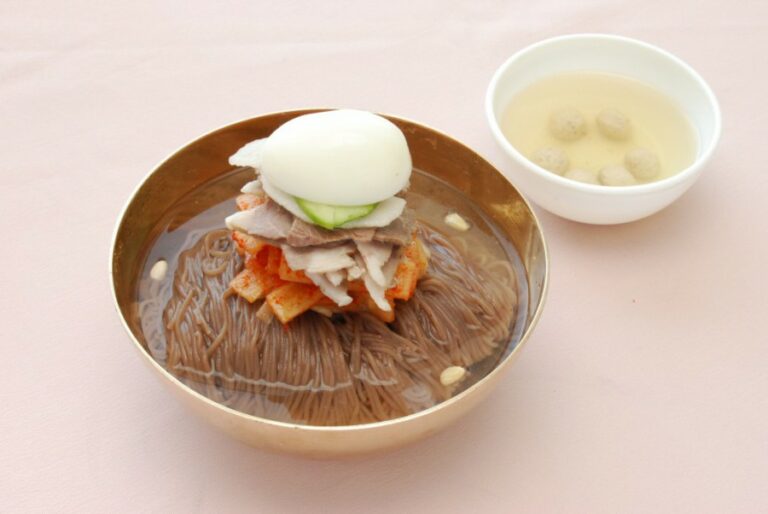Introduction: North Korean Cuisine
North Korean cuisine is often overshadowed by its South Korean counterpart, but it has a unique identity of its own. The cuisine is heavily influenced by the country’s geography and climate, as well as its history and political situation. North Korean cuisine is characterized by its simplicity, with an emphasis on preserving the natural flavors of the ingredients.
Chinese Influence on North Korean Cuisine
China has had a significant impact on North Korean cuisine, as the two countries share a long border and a history of cultural exchange. Chinese dishes such as jajangmyeon (noodles in black bean sauce) and tangsuyuk (sweet and sour pork) have become popular in North Korea, with some variations adapted to local tastes. Chinese cooking techniques such as stir-frying and steaming have also been adopted in North Korean cuisine.
Russian Influence on North Korean Cuisine
The Soviet Union had a strong influence on North Korea during the Cold War, and this is reflected in the country’s cuisine. Russian dishes such as borscht (beet soup) and pelmeni (dumplings) have made their way into North Korean cuisine, often with a Korean twist. Russian-style bread, made with rye flour, is also a common feature in North Korean meals.
Blending Chinese and Russian Influence in North Korean Cuisine
The blending of Chinese and Russian influence in North Korean cuisine has led to the creation of unique dishes that reflect the country’s history and culture. For example, pyeonsu (cold noodles) is a dish that combines Chinese-style wheat noodles with a Russian-inspired vinegar-based sauce. Another example is jangjorim, a dish of boiled beef and soy sauce that is similar to a Russian dish called beef stroganoff.
Popular North Korean Dishes with Chinese and Russian Origins
Some of the most popular North Korean dishes with Chinese and Russian origins include jajangmyeon, tangsuyuk, borscht, and pelmeni. Other dishes that are popular in North Korea but less well-known outside the country include naengmyeon (cold buckwheat noodles), kimchi jjigae (kimchi stew), and raengmyeon (spicy cold noodles).
Conclusion: The Significance of Foreign Influence on North Korean Cuisine
The influence of Chinese and Russian cuisines on North Korean cuisine is a reflection of the country’s complex history and its interactions with its neighbors. While North Korean cuisine has developed its own unique identity, it remains open to outside influence and continues to evolve. The blending of different culinary traditions is a testament to the diversity and richness of North Korean cuisine.

